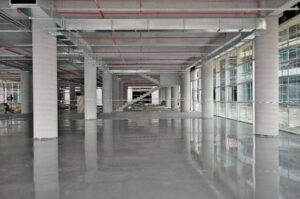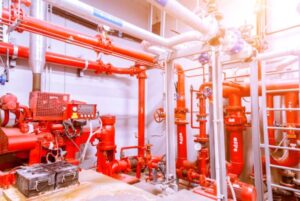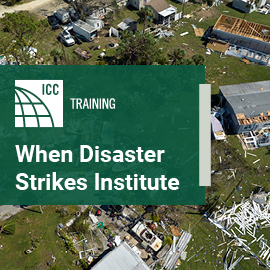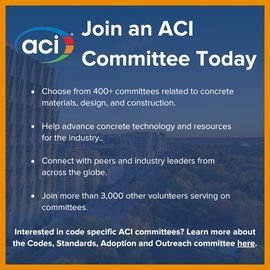
An overview of fire safety within the International Building Code
![]() People have expectations that when they enter a building, they will be safe from inherent dangers caused by natural or man-made disasters. The International Building Code (IBC) addresses that through five significant sections: code administration and enforcement, building planning, life safety, structural safety, and fire safety.
People have expectations that when they enter a building, they will be safe from inherent dangers caused by natural or man-made disasters. The International Building Code (IBC) addresses that through five significant sections: code administration and enforcement, building planning, life safety, structural safety, and fire safety.
The code is a set of minimum standards to protect and safeguard public health, safety and general welfare. The code requirements apply to the construction, alteration, movement, enlargement, replacement, repair, equipment, removal and demolition of every building or structure connected or attached to such buildings or structures.
 Fire and smoke are the leading causes of death in buildings. Fire can spread rapidly within a building and, in some cases, from building to building. The IBC is designed to limit the spread of fire inside and outside of a building. The IBC protects the structure and occupants from fire by providing both passive and active fire protection. Passive fire protection safeguards the building and occupants from fire by constructing the fire protection into the structure. This is done by protecting the structural frame of the building and constructing fire-resistance-rated construction walls, floors and roofs. Automatic fire sprinklers commonly provide active fire protection. These systems protect the building and/or occupants by suppressing a fire in a building.
Fire and smoke are the leading causes of death in buildings. Fire can spread rapidly within a building and, in some cases, from building to building. The IBC is designed to limit the spread of fire inside and outside of a building. The IBC protects the structure and occupants from fire by providing both passive and active fire protection. Passive fire protection safeguards the building and occupants from fire by constructing the fire protection into the structure. This is done by protecting the structural frame of the building and constructing fire-resistance-rated construction walls, floors and roofs. Automatic fire sprinklers commonly provide active fire protection. These systems protect the building and/or occupants by suppressing a fire in a building.
Fire produces heat that can weaken structural components and smoke products that cause property damage and place occupants at risk. The provisions of Chapter 7 of the IBC present the fundamental concepts of fire performance that all buildings are expected to achieve in some form. In addition, this chapter identifies the acceptable materials, techniques and methods by which proposed construction can be designed and evaluated to determine a building’s ability to limit the impact of fire. The fire-resistance-rated construction requirements within Chapter 7 provide passive resistance to the spread and effects of fire. Types of separations addressed include firewalls, fire barriers, fire partitions, horizontal assemblies, smoke barriers and smoke partitions.
 Chapter 8 of the IBC contains the performance requirements for controlling fire growth within buildings by restricting interior finish and decorative materials. The provisions of Chapter 8 require materials used as interior finishes and decorations to meet specific flame-spread index or flame-propagation criteria based on the relative fire hazard associated with the occupancy. As smoke is also a hazard associated with fire, this chapter limits the smoke development characteristics of interior finishes. The performance of the material is evaluated based on test standards.
Chapter 8 of the IBC contains the performance requirements for controlling fire growth within buildings by restricting interior finish and decorative materials. The provisions of Chapter 8 require materials used as interior finishes and decorations to meet specific flame-spread index or flame-propagation criteria based on the relative fire hazard associated with the occupancy. As smoke is also a hazard associated with fire, this chapter limits the smoke development characteristics of interior finishes. The performance of the material is evaluated based on test standards.
Chapter 9 of the IBC prescribes the minimum requirements for active fire protection equipment systems to perform the following functions: detect a fire; alert the occupants or fire department of a fire emergency, and control smoke and control or extinguish the fire. Generally, the requirements are based on the occupancy, the height and the area of the building.
Chapter 14 of the IBC addresses requirements for exterior walls of buildings, including minimum standards for wall covering materials, installation of wall coverings and the wall’s ability to provide weather protection are provided. This chapter also requires exterior walls that are close to lot lines or bearing walls for certain types of construction to comply with the minimum fire-resistance ratings specified in Chapters 6 and 7.
The use of plastics in building construction and components is addressed in Chapter 26 of the IBC. In addition, this chapter provides standards addressing foam plastic insulation, foam plastics used as interior finish and trim, and other plastic veneers used inside or outside a building.
The code provides safety to life and property from fire and other hazards in the built environment and protects firefighters and emergency responders during emergency operations.








